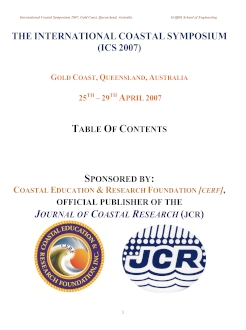Salmon, S. A., Bryan, K. R and Coco, G., 2007. The use of video systems to measure run-up on beaches. Journal of Coastal Research, SI 50 (Proceedings of the 9th International Coastal Symposium), 211 – 215. Gold Coast, Australia, ISSN 0749.0208
Wave run-up on beaches is a major driver of dune erosion and flooding during storm events on beaches. Using video imagery time-series collected over 2 field experiments, a new technique for measuring extreme run-up has been developed for use on natural beaches over a wide range of spatial and temporal scales. Waterline variations over 2 storm events were measured by collecting pixels from the video images along a cross-shore transect (timestack). The maximum swash excursions were digitized from the time-stacks, and rectified to provide a runup time series with a duration of 20 minutes. In order to rectify run-up observations an estimate of the run-up elevation is needed. This was supplied using video measurements of the beachface morphology (e.g. beach slope). This was estimated by measuring the variation of the waterline over a tidal cycle from time-averaged video images taken during a storm event. This technique was tested against run-up measurements calculated using a standard empirical run-up equation and provides reliable estimates of run-up from video observations.





